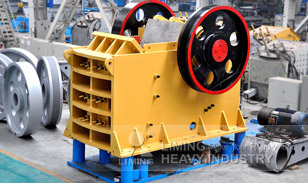Choice of railway materials is usually available at the local level, coarse soils (classified G or S), albeit dispersed soils in the BEFORE and CL groups can be used in some cases. Examine the limestone rocks, coral, shell, ash, slag, Kalisz, and fell granite in the assessment of sources of material selection. Railway Materials
Railway materials can consist of natural, coarse-grained soil or mixed and processing of soil. Lime Rock, corals, shells, ash, slag, Kalisz, and fell granite can be used as a subbases, when they meet requirements.The existing roadbed can meet the requirements of the псевдобазу, or, it may be possible to treat the existing in the bed of the production base of submarines. Do not mix native or processed materials, if the clean soil of Ukraine L. and P. I. requirements.
Suitablev Materials
Suitable Materials may be formed with the use of materials, stabilized commercial impurities. Portland cement, hydrated lime, ash, and bitumen materials are widely used for this purpose. The plasticity of some materials can be reduced by adding lime or Portland concrete, so that they could be used as a subbases. The basic materials of the courses: Natural, processed and used other materials for the basic courses.
The description of these materials to follow
A variety of gravel; Sands: gravel and sandy soils and other natural materials, such as limestone rock, corals, shells, and some caliches can be used alone or mixed, as appropriate courses base. Sometimes natural materials requires the crushing or removal of large-sized materials save gradation of limitations. Some of the natural materials can be suitable for use as the base rate by blending or mixing them with other materials.
Sand and gravel.

Many of the natural deposits of sand-gravel materials, allow satisfactory materials base course. Alluvial deposits differ from each other in the relative ratios of coarse-and fine-grained material and the nature of debris. Satisfactory material base often is made by mixing of materials of two or more deposits. Uncrushed, clean, washed gravel, as a rule, is not suitable for a basic course, because not enough fines present time.
Fines act as a binder and fill in the voids between the larger particles. Sand and clay. Natural mixture of sand and clay, which are most often placed in the alluvial sediments of different thickness. Often there Are big differences in the proportions of sand and clay from the upper to the lower part of the Deposit. Depending on the ratio of sand and clay, these deposits can also provide suitable material base course. With the right dosage, and methods of construction, satisfactory results can be obtained with sand and clay soils.
Deposits
Deposits partially broke up on the rocks, which are made up of fragments of rocks, clay, mica flakes should not be confused with sand and clay soils. Mica flakes to make a Deposit is suitable for use as a base course. By adopting these deposits-argillaceous soil of sand can cause the failure of the rate base. Processed materials. The processed materials are produced by crushing and screening rock, gravel or slag.
Properly graded crushed stone basic course material, made of sound, strong stone gives the highest quality of material base. Existing career; ledge of rock, rocks, gravel, debris fields; the coarse tailings Me, as well as the same hard, strong of debris are sources of materials. The basic courses of the processed materials, can be divided into three main types: stabilized, large-scaled and crushed stone.





